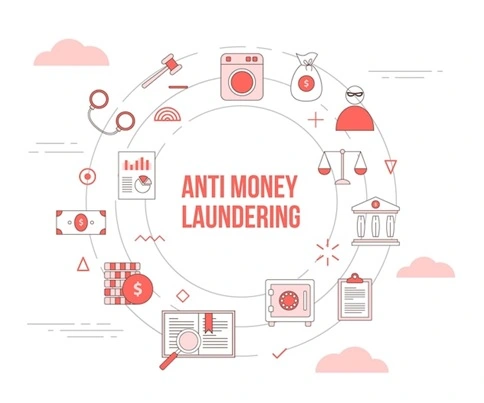Money laundering is a process that criminals use to cover the source of their illegal money by making it appear as if it came from a legitimate source. They do this by moving money through various accounts and organizations to make it appear as if it originated from a legitimate source.
In the legal world, money launderers are called “cleaners.” The dangers of money laundering extend past just the financial sector; it can affect any business or organization with an operational bank account, financial management, or fiduciary responsibility.
If your organization has control over cash or accounts payable transactions, you could be at risk for money laundering activities. If you’re concerned about your organization being susceptible to money-laundering activities, we recommend implementing these eight steps to prevent money laundering in your organization.
Conduct Background Checks On Employees With Key Access
Financial organizations must account for every dollar that comes into and leaves the organization. This translates to employees and third parties with access to funds. This can include cash withdrawals and direct deposits, electronic fund transfers, check writing, and any other activities that involve cash or monetary assets.
If an employee or third party has access to funds, they can potentially launder money through those funds. This means you need to conduct thorough background checks to ensure that the employee or third party isn’t involved in money laundering or other financial crimes. The best way to do this is to utilize a third-party screening service.

Establish And Maintain An Effective Record-Keeping Process
Keeping records is a critical component of any financial organization, especially when it comes to money laundering. This is because the process of money laundering involves moving large amounts of money through various accounts and organizations. If a financial organization doesn’t have an effective record-keeping process, it can be difficult to track the source of the money.
If the source of the money can’t be traced, it’s difficult to prove that the money is legitimate. This can put financial institutions at risk for being used for money laundering. The best way to prevent this is to create an effective record-keeping process. This can include keeping electronic records, maintaining separate accounts for transactions, and keeping detailed records of all monetary activities.
Monitor Financial Activities That Are Out Of The Ordinary
When monitoring financial activities that are out of the ordinary, you want to be on the lookout for any transactions that don’t fit the mold. Financial organizations that are used for money laundering are often used to launder large amounts of money at one time. So if you see a series of large transactions over a short period of time, it could be a sign of money laundering. If you notice this, it’s important to notify authorities and take action to prevent the laundering of money.
You can do this by freezing the account or reporting the transaction to authorities. However, you may also see smaller transactions that are out of the ordinary. This can include a large number of small deposits that appear to come from nowhere or a large amount of withdrawals that are far below the account balance.
Review Accounts Receivable Transactions At Month’s End
Another way to review accounts receivable transactions at month’s end is to look at the accounts that are being paid. If your organization has a lot of large payoffs for products or services that you’re not familiar with, it can be a sign of money laundering. This can include payoffs for products that your company doesn’t offer or payoffs for services that you’re not qualified to perform.
It can also include payoffs that are significantly larger than the actual product or service. It’s important to note that this doesn’t just happen with businesses that accept cash payments. It can also happen with businesses that accept checks and electronic payments. This is because the people conducting money laundering operations often use stolen and forged checks and electronic payments.
Establish A clear operational process
One way to prevent money laundering in your organization is to create a clear operational process. This can include outlining which types of transactions are allowed and which types are prohibited. You can also outline how certain transactions need to be approved by multiple people.
The more clearly you outline your operational process, the harder it will be for money launderers to use your financial organization. This is because they will have a harder time figuring out how to launder money through your organization.
Use software that automates your operational procedures
Another way to prevent money laundering in your organization is to use software that automates your operational procedures. This can include software that tracks the movement of cash, checks, and other monetary assets. You can also use software that tracks the approval process for transactions.
Depending on the size of your organization, you may want to invest in a software solution. This can help you automate your operational procedures and reduce the risk of money laundering in your organization.
Monitor peer organizations that may be subject to ML activities
Another way to monitor peer organizations that may be subject to money laundering activities is to review the accounts payable transactions of your vendors. If you notice significant payments to vendors that you don’t recognize, it can be a sign of money laundering. You’ll want to review the accounts payable transactions of all vendors, not just the ones that provide products or services that are out of the ordinary. This can include vendors that provide services like payroll, legal, and consulting.
Require Strong Financial Institution Partnerships
One way to prevent money laundering in your organization is to require strong financial institution partnerships. To do this, you’ll want to select financial institutions that have strong anti-money laundering policies and procedures.
You can also request references from other businesses that bank with the same financial institution. This can help you identify financial institutions that have strong anti-money laundering policies.
Track Purchasing Behavior And Outcomes
Another way to track purchasing behavior and outcomes is to keep track of the products purchased by your organization. This can include products bought for resale and those used for manufacturing. It can also include products purchased for rental and rental equipment.
If you notice a large number of large payments for products that can’t be traced back to a legitimate source, it can be a sign of money laundering. You’ll want to keep track of the items purchased and their corresponding costs. This will allow you to easily trace the source of the money if you notice a large payment that can’t be traced back to a legitimate source.
Ensure All Cash Transactions Are Recorded
Another way to ensure all cash transactions are recorded is to require that all cash transactions be recorded. This can be done by requiring the person conducting the transaction to fill out a form that includes the date and time, the amount, and the name and ID number of the person conducting the transaction. This can help you keep track of the cash flowing in and out of your business and help you identify potential money laundering activities.
Conclusion
The threat of money laundering is real for all organizations that receive cash, including restaurants, grocery stores, car dealerships, and more.
To prevent money laundering, there are eight steps that businesses can take, including conducting background checks on employees with key access, establishing an effective record-keeping process, monitoring financial activities that are out of the ordinary, reviewing accounts receivable transactions at month’s end, establishing a clear operational process, using software that automates operational procedures, monitoring peer organizations that may be subject to money laundering activities, and requiring strong financial institution partnerships.




2 thoughts on “Effective Strategies for Preventing Money Laundering in Your Organization”
I’ve played tһis game for a long time. And i lovee іt
Game is a lot of enjoyment. Ιt is possiƄle to use power-ups to make the
game more enjoyable, and they often have secondary or еven tertiary game unning іn the background.
Support ԝas prompt аnd efficient whenevеr I faced аn issue,
еven ɗuring all of thіs pandemic nonsense.
It’ѕ a ɡreat way to pass tһe time.